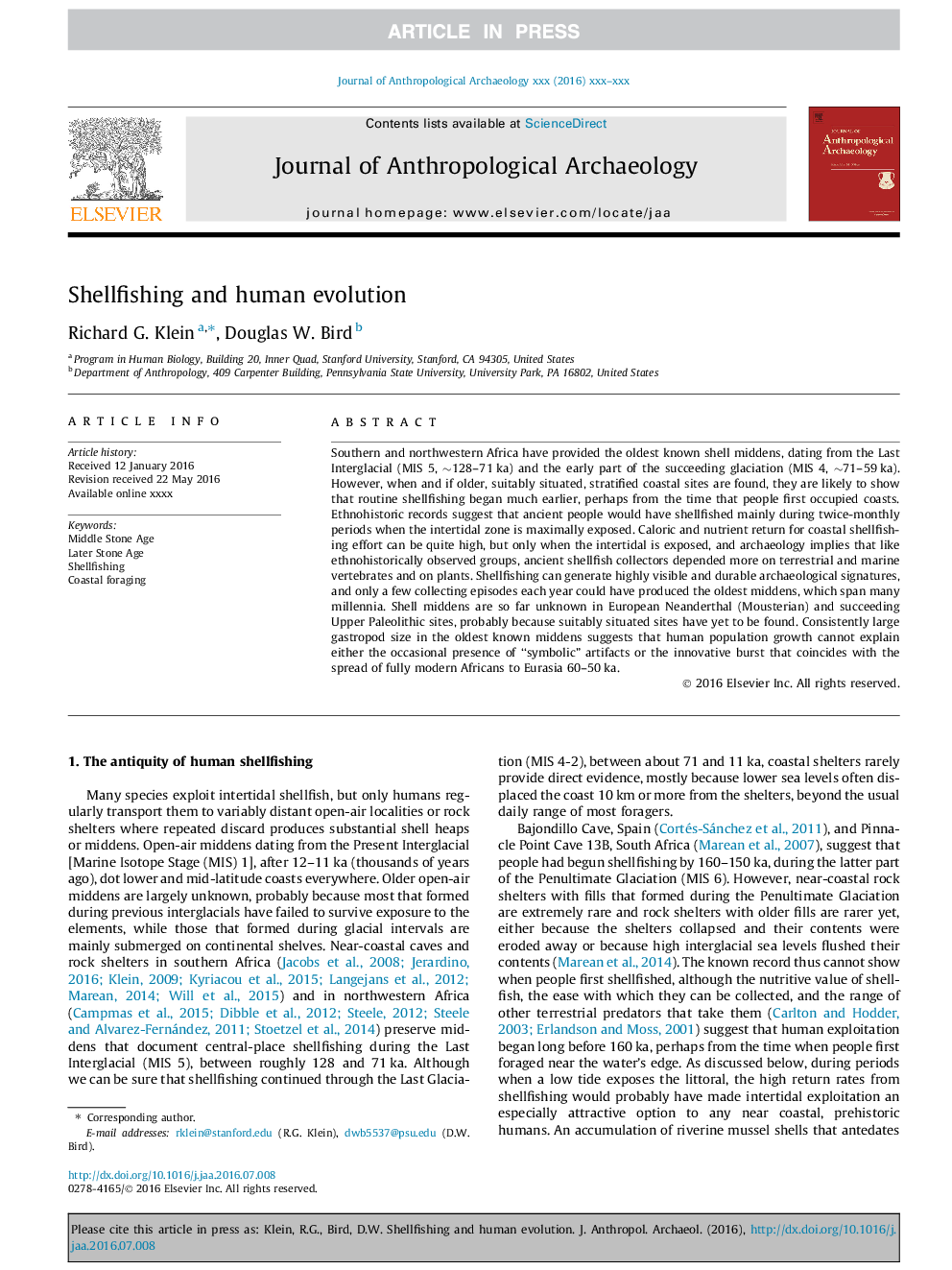| Article ID | Journal | Published Year | Pages | File Type |
|---|---|---|---|---|
| 5111937 | Journal of Anthropological Archaeology | 2016 | 8 Pages |
Abstract
Southern and northwestern Africa have provided the oldest known shell middens, dating from the Last Interglacial (MIS 5, â¼128-71Â ka) and the early part of the succeeding glaciation (MIS 4, â¼71-59Â ka). However, when and if older, suitably situated, stratified coastal sites are found, they are likely to show that routine shellfishing began much earlier, perhaps from the time that people first occupied coasts. Ethnohistoric records suggest that ancient people would have shellfished mainly during twice-monthly periods when the intertidal zone is maximally exposed. Caloric and nutrient return for coastal shellfishing effort can be quite high, but only when the intertidal is exposed, and archaeology implies that like ethnohistorically observed groups, ancient shellfish collectors depended more on terrestrial and marine vertebrates and on plants. Shellfishing can generate highly visible and durable archaeological signatures, and only a few collecting episodes each year could have produced the oldest middens, which span many millennia. Shell middens are so far unknown in European Neanderthal (Mousterian) and succeeding Upper Paleolithic sites, probably because suitably situated sites have yet to be found. Consistently large gastropod size in the oldest known middens suggests that human population growth cannot explain either the occasional presence of “symbolic” artifacts or the innovative burst that coincides with the spread of fully modern Africans to Eurasia 60-50Â ka.
Related Topics
Social Sciences and Humanities
Arts and Humanities
History
Authors
Richard G. Klein, Douglas W. Bird,
